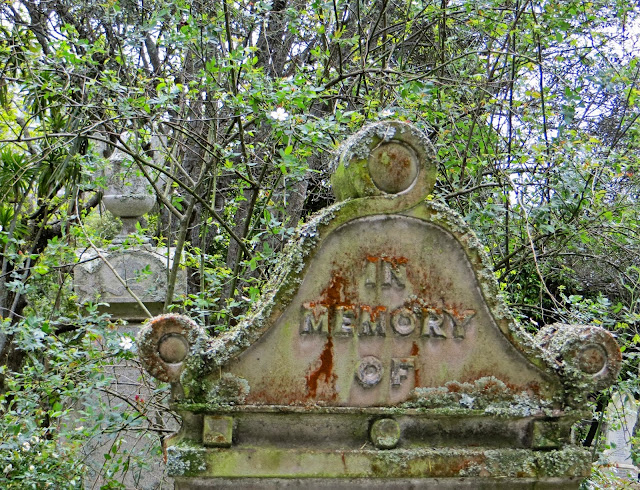 |
| Our rather dapper-looking guide, dressed in period costume |
Two hours meandering around a cemetery may not be
everyone’s idea of a fun Sunday afternoon but it is mine! With a knowledgeable
guide to explain the history of the site, to point out heritage flora, to tell
the tales of interesting pioneers and to clarify the meanings of gravestone
decorations, this resting place of the dead was magically brought to life … and
there wasn’t a ghost or zombie to be seen!
The guided walk was part of the Auckland Heritage
Festival, an annual event which this year runs from 28 September to 13 October.
There’s a programme of events throughout Auckland Auckland
With burials dating from the early 1840s, Symonds Street
Cemetery was Auckland ’s
first, though it was closed after just 40 years and, except for additional
members of families already buried at the cemetery, deceased central
Aucklanders were later interred at the newly opened Waikumete Cemetery
The cemetery is not as unified as its name
implies: there are, in fact, five separate cemeteries, one each for the Jews,
Roman Catholics, Anglicans, Presbyterians and Wesleyans, and they are each
quite different in character, a reflection of the individual religions’ beliefs
about idolatry and the use of decoration. The gravestones of the Wesleyan
section, for example, are relatively plain, in keeping with the conservative
nature of the religion itself. The Wesleyans were, however, very inclusive – they
allowed the burial in their consecrated grounds of those who had committed
suicide, which in earlier times was not permitted by Catholics and Anglicans.
The material used for grave-markers ranges from
local stone to fine Italian marble, with many graves also surrounded by fences
of finely worked wrought iron. Most are not local creations but were brought
from Europe – apparently, after the introduction of the refrigerated ships that
carried New Zealand produce to Britain, the practice was to fill the hulls of
these ships with heavy items like gravestones and iron for the return journey
to New Zealand, so much of the ornate marble decoration was actually carved in
Italy and only the names of the deceased were added by Auckland masons.
Some years ago I completed a university paper
called ‘The Art of Death’, about the iconography of death in Ancient Greece, so
I found our guide’s explanations of the gravestone decorations particularly fascinating.
For example, did you know that a broken column signifies a life cut short and,
if that column has a wreath of flowers or leaves carved around it, then the
grave is almost certainly for a young woman? Were you aware that a draped urn
was a symbol for the uncertainty of life, or that images of hands being shaken
indicate the hands of the deceased and the living clasped in farewell? Did you
know that the unusual shape of the passionfruit flower was interpreted as symbolic
of the crucifixion, or that the depiction of the tree of life, symbolising a
family of several generations, is quite common on Victorian gravestones?
As well as flora carved in stone, the Symonds
Street Cemetery also contains some heritage plants, escapees from funeral
wreaths and survivors of plants planted by loved ones. Roses ramble over rusty
railings (sorry, couldn’t resist the alliteration), camellias have grown into
huge trees, and you can even find the occasional burst of bright pink oxalis flower
– not the invasive weed all gardeners’ dread, but an ornamental variety
commonly grown in Victorian flowerbeds.
 |
| The passionfruit flower, symbolic of the crucifixion |
I have no personal connection to any of the people buried in the
As a family historian, I have spent many hours
walking around cemeteries looking for ancestors’ graves but these two hours
exploring the Symonds Street






No comments:
Post a Comment